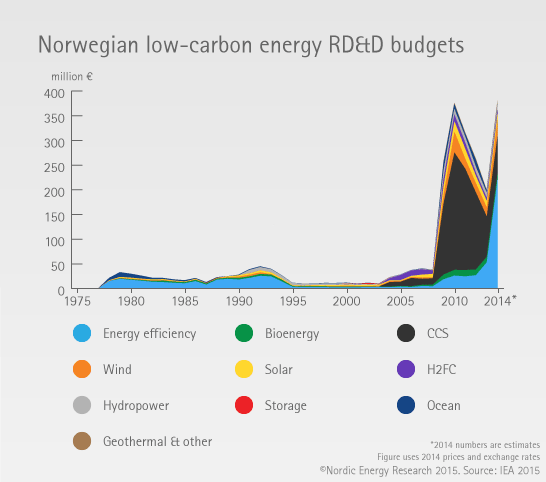
Norwegian public low-carbon RD&D support has seen a dramatic increase in recent years, beginning in 2004 when the Research Council of Norway’s RENERGI programme started in 2004.
Carbon capture and storage (CCS) has seen significant support over the last decade, building on the country’s expertise in oil and gas extraction, and the potential for storage sites in the off the Norwegian coast. The increase in CCS RD&D funding from the mid 2000’s can be explained by the introduction of the CLIMIT in 2005, Norway’s main CCS RD&D programme.
The start of the RENERGIX, which was a continuation to the RENERGI, contributed to the increase in funding for renewables in 2009. RENERGIX was replaced by ENERGIX in 2013 and is now Norway’s largest clean energy R&D programme. In addition, The Research Council of Norway started Centres for Environmentally friendly Energy Research (FME) the same year, a programme which is currently about half the size of ENERGIX.
This recent surge is in stark contrast to the levels of low-carbon RD&D support seen until the mid 2000’s. Compared to other Nordic countries, Norway has had a much greater focus on fossil-fuel RD&D, considering that oil and gas extraction is the country’s largest industry.
Norway has also had focus on PV solar technologies, primarily as an export-driven industry. Solar energy technologies are based on the country’s electro-metallurgical competencies, and the fact that Norway has one of the world’s largest natural deposits of silicon.
For further information, click here.
Note: Figure shows million Euros with 2014 prices and exchange rates.
Data source: IEA
